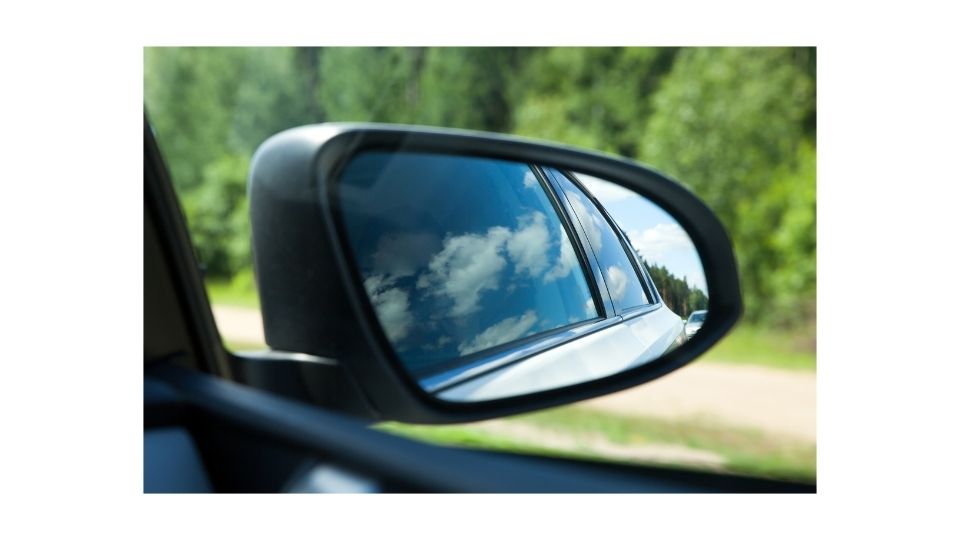I remember when I wanted to get the rear window of my car tinted a few years ago. It was legally approved in the area I resided, only requiring the installation of dual side mirrors.
It sounded familiar, but I still decided to look at the internet for additional insights on installing dual-side mirrors. I realized there isn’t enough info out there, even in my favorite online automotive community.
This is probably because it feels like a noob question, so you won’t find many gearheads talking about it.
Imagine you find yourself in my situation then; you might be wondering whether dual side mirrors are the usual side mirrors placed on both sides of the windshield or whether they have been uniquely designed to serve as rearview mirrors.
The rest of this article is loaded with enough information on what you need to know about dual side mirrors, other types, installation, and correct adjustment. But first, let’s answer the question of the day.
What are Dual Side Mirrors on Cars?
You are probably right; your idea about the available side mirrors that we all know is also the same thing as dual side mirrors.
If you are to install dual side mirrors, it simply means you need to get side mirrors mounted on each side of the windshield – both driver’s and passengers – as ‘dual’ means two.
The need for dual side mirrors doesn’t use to be this usual, though. Unlike in many modern cars, mounting an extra passenger’s side mirror used to be a feature, not necessarily a core component.
That explains why it is not common these days to talk about buying and installing ‘dual side mirrors’, except in cases of repair or revamp.
However, like in my situation then, vehicles with blacked-out back windows and just the driver’s side mirror may be required to get it dual on both sides to improve the driver’s visibility while driving and cover enough blind spots behind the car. This becomes necessary since the car’s rearview mirror is now close to useless due to the tint obstruction.
Why are Dual Mirrors Important
Generally speaking, it is prohibited to drive without the passenger side-view mirror. However, it becomes indispensable to have two working mirrors, not just to enhance your vehicle’s appearance but basically for safety concerns.
The primary function of installing dual-side mirrors is to give you added visibility to what may be coming from behind, especially when you have a tinted back window that renders the rearview mirror less functional.
Aside from this, dual side mirrors put the driver in a better position when changing lanes or drifting slightly, either from left to right or vice versa, to prevent colliding with any approaching vehicle that has been tailgating.
It is also noteworthy that many state policies approve only a single unobstructed mirror but require a dual side mirror when the driver has a vision restriction on their license.
Different Types of Dual Mirrors
As with any vehicle component, there are variations to dual side mirrors that have come to light over the years as car manufacturing evolved. If you are going to mount a dual side mirror or get it replaced, you ought to know the different types available and the particular one needed.
| Dual Mirror Type | Description | Features |
|---|---|---|
| Manual | The oldest type of side mirrors with the most straightforward design, probably the most cost-friendly. | No electrical wires or switches. It needs to be positioned by hand. |
| Power Side view Mirrors | Adjusted with electricity (A controllable switch from the inside) | Features 3 wires, can come in variations like heated, Mirrors with memory or signal. |
| Towing Mirror | Ideally suited for trucks, especially ones that tow large trailers | Similarly have variations like Manual, Power, Heated, signal, memory, convex glass, etc. |
| Telescopic Mirrors | It goes along with towing mirrors. It can be extended out from the sides to aid improved rearward vision. | It has a standard and extended position. |
Do cars always have two side mirrors?
New vehicles don’t always have a factory-installed side-view mirror on the passenger side. As a car owner, even until the early 90s, you needed to pay for it to be mounted.
Over the years, cars’ design and safety necessities have gone from what they used to be to what we have now, and I’m confident that that trend won’t settle at one final pattern.
The essentiality of these various safety requirements in a car was significantly influenced by the regulations made by lawmakers for auto manufacturers and even we as car owners when driving on highways.
An excellent example of this is the installation of a side mirror on the side of the passenger. In the past century, this was not deemed necessary by regulators given the structure of transportation – talk about the number of road lanes and their direction.
Fast-forward to the present day; there aren’t still any stiff regulations on driving with dual side mirrors. What is necessary is the side mirror on the driver side and the rear-view mirror, except in some scenarios as explained earlier.
Conclusion on Dual Mirrors
In the last couple of decades, many people no longer have in-depth discussions about the need to have dual side mirrors since it has become a common vehicle part.
However, considering the rapid evolution of automobile technology like integrated sensors and AI in driving, dual side mirrors may become unnecessary in the nearest future.

Robert Anderson is a world class motorhead who rebuilt his first carb at age 10, his first engine at age 15, and completed his first full hotrod build when he was just 18! Previously, he has ran a part warehouse, delivered pizzas, and managed the service department for a $20 million/year revenue dealership. Robert knows cars like few others and he is passionate about sharing his knowledge.

